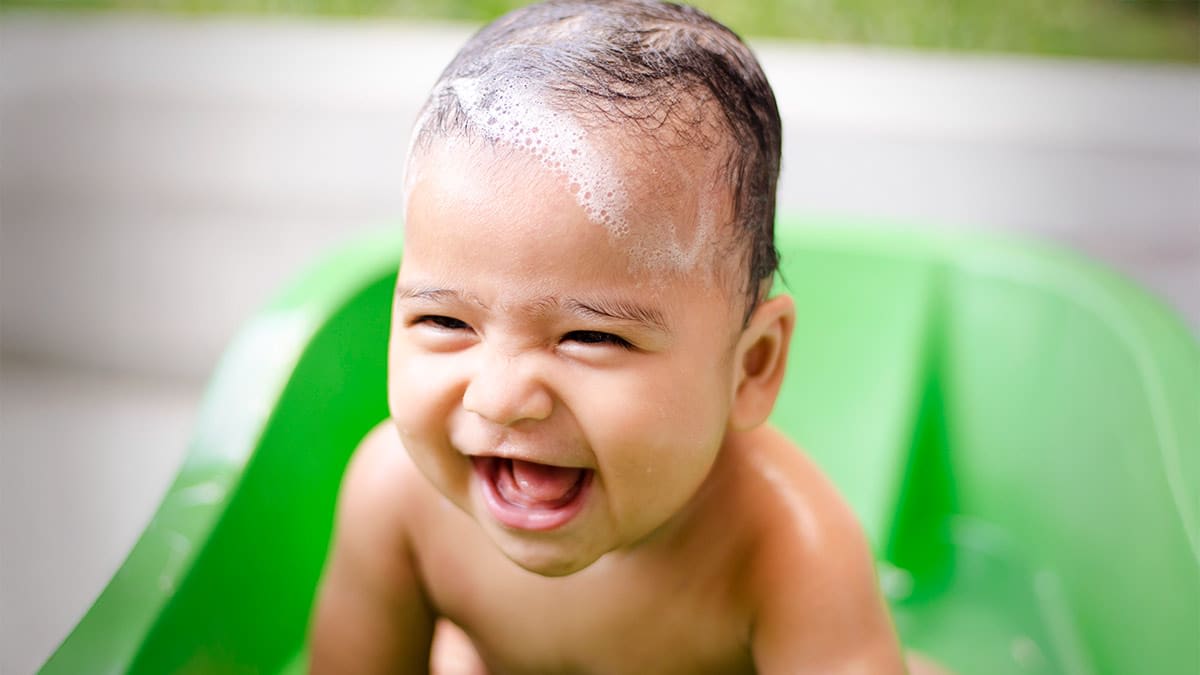Baby Shampoos Without Harmful Chemicals

Hair needs are unique to each individual, and your child might benefit from a bathtime routine tailored to their specific hair type, whether wavy, curly, coily, or straight.
To start, use only water to wash your baby’s hair for the first few baths before introducing a gentle shampoo, says Asamoa. If your baby’s hair becomes oily quickly, you might consider washing more frequently. If your baby’s hair is fragile, wash gently and less frequently. Regardless of hair type, Asamoa says it’s not recommended to wash an infant’s hair more than two or three times per week.
The tips below can help you find the right wash routine for your baby based on their hair’s moisture needs, fragility, and oil production. Don’t be afraid to experiment and make adjustments over time—your child’s hair (and their hair care routine) will change as they grow.
Caring for coily, kinky, and curly hair: Coily, kinky, and curly hair tends to be on the drier side, especially for individuals of African descent. “As a nurse educator and clinical leader for a pediatric clinic, I always stress the importance of clean and moisturized hair and skin,” Asamoa says. “Children with melanated skin may become dry and flaky after washing.” She recommends using a natural moisturizer to prevent itching and scaling. You may also consider fewer baths each week, as overwashing can dry out the skin and hair. To maintain moisture, wash hair once per week. If baby needs a bath between hair washes, you can always skip the hair wash.
If your baby’s curly or coily hair is dry after washing, consider adding additional moisture. According to Asamoa, you may moisturize once or twice a week using a light oil or gentle detangler. Finer hair might be weighed down by oil, so you can try a light cream moisturizer with simple, natural ingredients instead. These hair types can also be fragile, particularly hair of individuals with African descent, so make sure to wash carefully and gently, and gently pat dry with a soft (or microfiber) towel to decrease the chance of breakage.
Consider a product formulated specifically for coily, kinky, and curly hair. You can also look for products that offer moisturizing or detangling benefits. Three products from our review—Cristina’s Curls Nourishing Baby Shampoo and Body Wash, Alaffia Babies & Kids Detangling Shampoo in Coconut Strawberry, and Cara B Naturally Baby Shampoo and Body Wash—are all good places to start. Other Top Choice and Good Choice products in our review labeled as “moisturizing” and “gentle” may also be helpful for these hair types.
Coily, kinky, and curly hair can easily become tangled. Use your fingers or a wide-tooth comb to untangle. Approaching this process when the hair is wet with the help of a baby-safe detangling shampoo or spray can make it easier.
Caring for wavy hair: Start by washing once per week and increase to twice per week if your baby’s hair gets oily quickly. To avoid breakage, avoid rubbing wavy hair dry with a towel.
All babies with wavy hair can benefit from shampoos that offer moisturizing properties, though those that are too moisture-rich may weigh down fine hair. Parents with wavy-haired babies of African descent might find that some products don’t offer enough moisture—look for products listed as moisturizing and gentle.
Caring for straight hair: Start with one to two hair washes a week and increase (to a max of three) or decrease, based on how quickly your baby’s hair gets oily. Babies with fine hair may get weighed down by products with too many moisturizing ingredients, so consider a foaming shampoo. Avoid rubbing fine hair dry with a towel to avoid breakage.
Care tips for all hair types: According to Asamoa, infant hair is fragile and should be brushed, combed and handled lightly to avoid scalp damage. Asamoa also recommends avoiding beads, tight bows, or rubber bands in infant hair. “These items can be swallowing hazards if the child pulls them,” Asamoa says. Stick to only the occasional use of soft hair bands and headbands that don’t pull or present a choking hazard. Better yet, avoid styling altogether and keep hair in its natural state as much as possible. “Let the curls flow,” Asamoa says.
Source link










